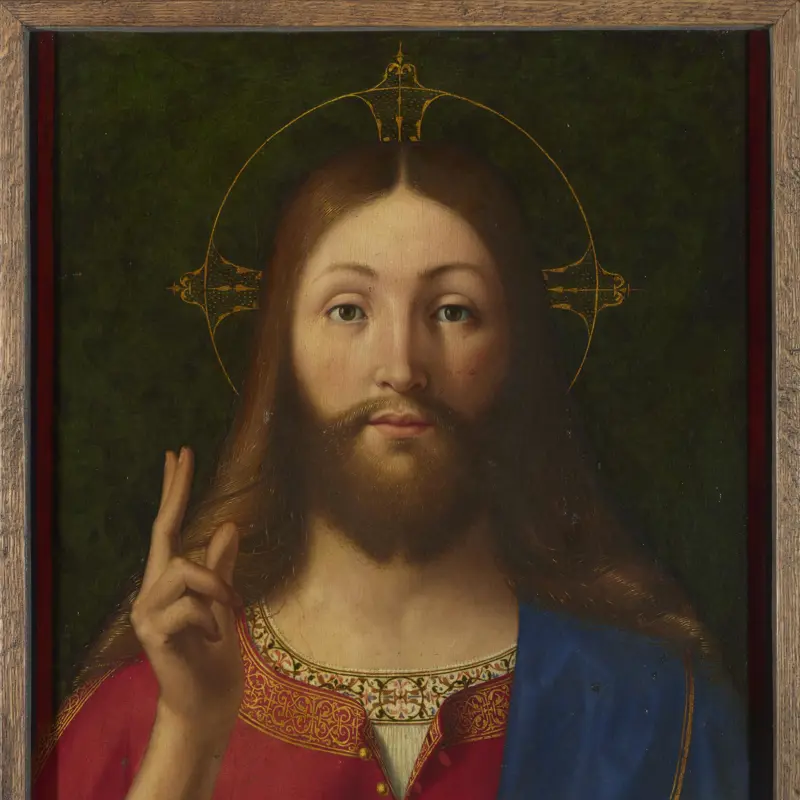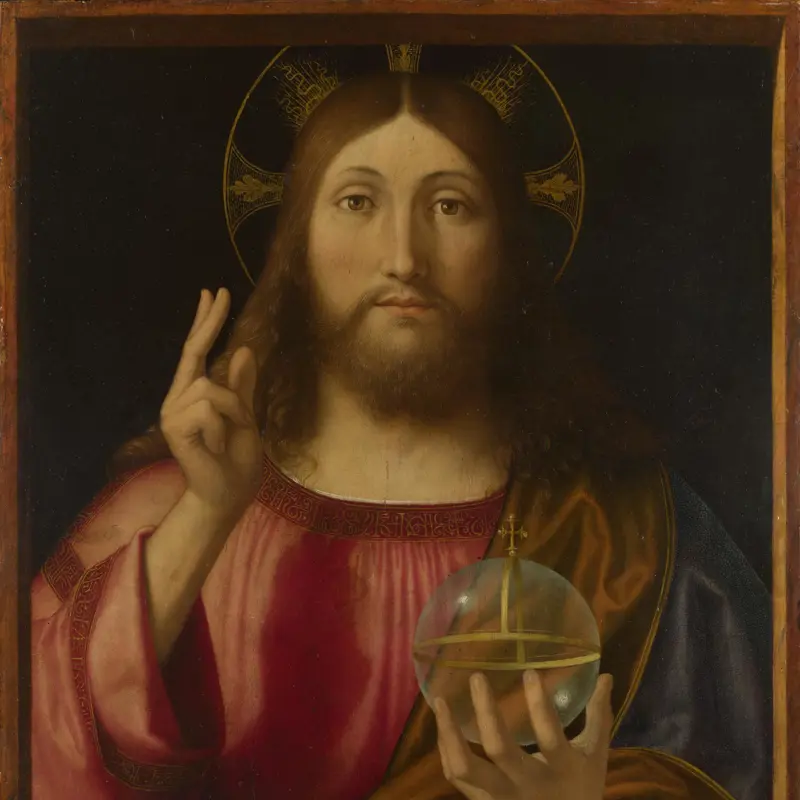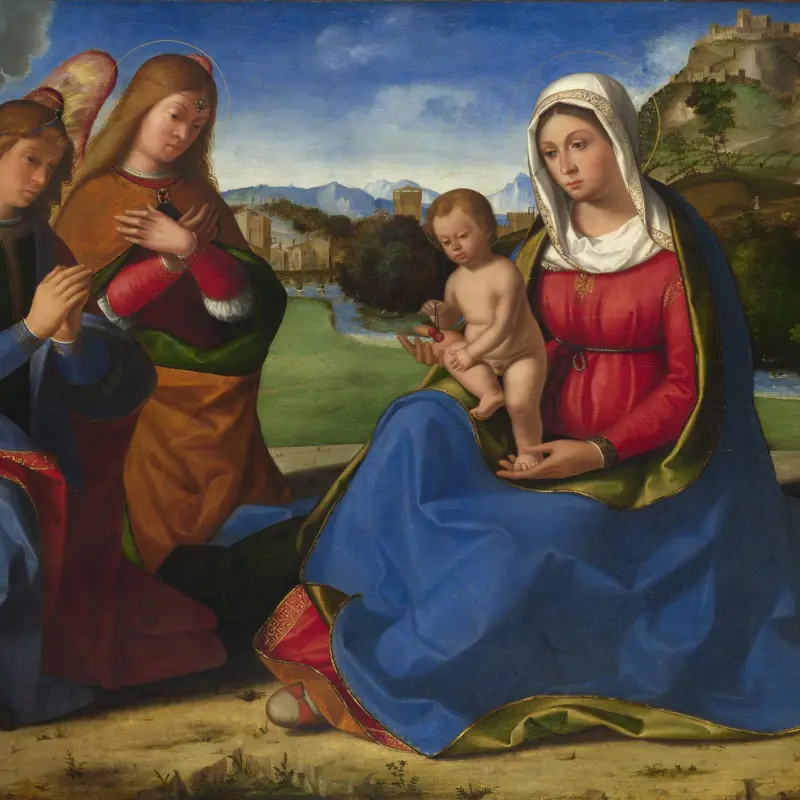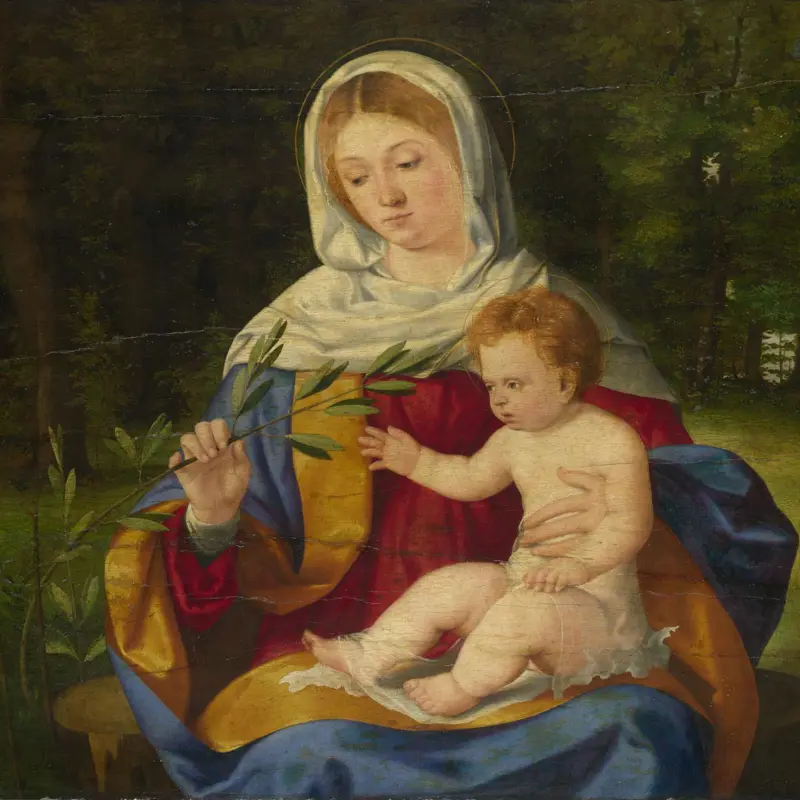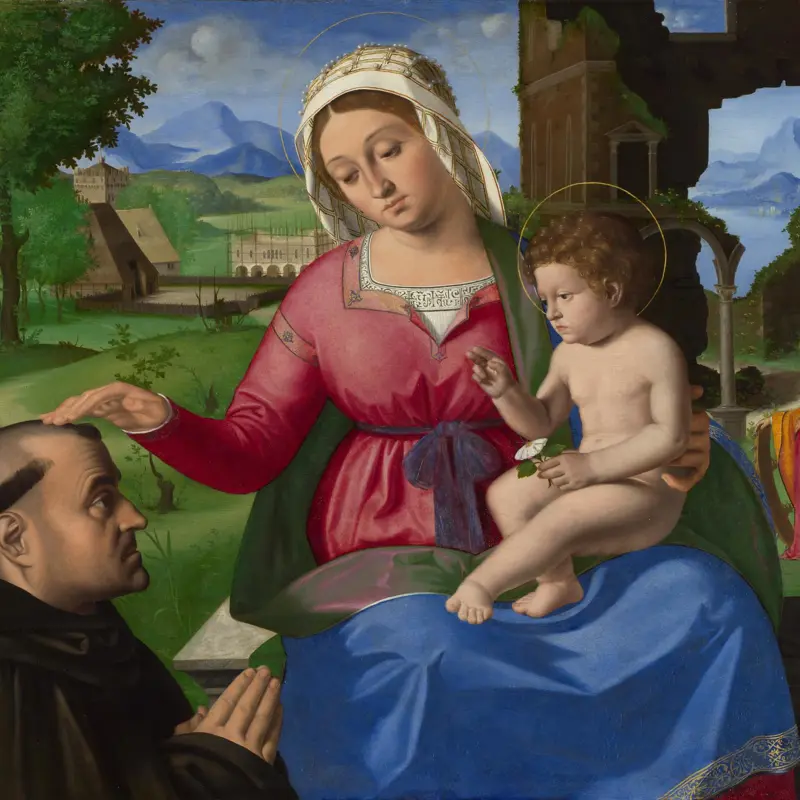Andrea Previtali, 'The Virgin and Child with Saints', 1504
About the work
Overview
This painting, which has suffered extensive damage and is currently undergoing conservation, is signed and dated on the paper on the marble ledge. The writing translates as: ‘Andrea thread and needle follower of Giovanni Bellini painted this in 1504.’ Andrea Previtali signed himself ‘thread and needle’ because his father was a tailor. Previtali’s painting is similar to Giovanni Bellini’s Giovanelli Sacra Conversazione (Accademia, Venice), which may explain why he signed his name as well as his own.
The infant Christ places a ring on Saint Catherine’s finger, echoing her vision that she had a ‘mystic marriage’ with Christ. The Virgin holds Saint Catherine’s finger while Saint John the Baptist watches. The painting would probably have been used for private devotion at home.
A painting by Previtali in S. Giobbe in Venice with the same composition is likely to have been painted first and the National Gallery picture painted later by Previtali.
Key facts
Details
- Full title
- The Virgin and Child with Saints John the Baptist and Catherine
- Artist
- Andrea Previtali
- Artist dates
- about 1480 - 1528
- Date made
- 1504
- Medium and support
- oil on wood
- Dimensions
- 66.3 × 87.5 cm
- Inscription summary
- Signed; Dated and inscribed
- Acquisition credit
- Bought, 1894
- Inventory number
- NG1409
- Location
- Not on display
- Collection
- Main Collection
Provenance
Additional information
Text extracted from the ‘Provenance’ section of the catalogue entry in Nicholas Penny, ‘National Gallery Catalogues: The Sixteenth Century Italian Paintings’, vol. 1, ‘Paintings from Bergamo, Brescia and Cremona’, London 2004; for further information, see the full catalogue entry.
Bibliography
-
1951Davies, Martin, National Gallery Catalogues: The Earlier Italian Schools, London 1951
-
1986Davies, Martin, National Gallery Catalogues: The Earlier Italian Schools, revised edn, London 1986
-
2001
C. Baker and T. Henry, The National Gallery: Complete Illustrated Catalogue, London 2001
-
2004
Penny, Nicholas, National Gallery Catalogues: The Sixteenth Century Italian Paintings, 1, Paintings from Bergamo, Brescia and Cremona, London 2004
About this record
If you know more about this work or have spotted an error, please contact us. Please note that exhibition histories are listed from 2009 onwards. Bibliographies may not be complete; more comprehensive information is available in the National Gallery Library.

